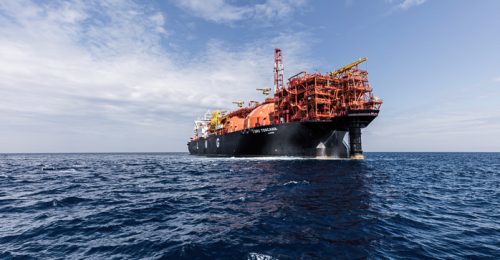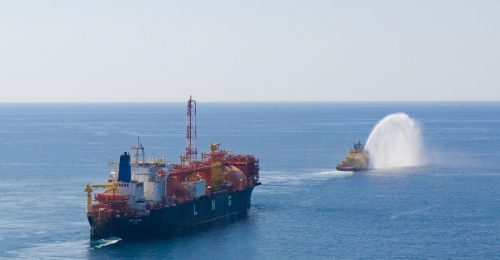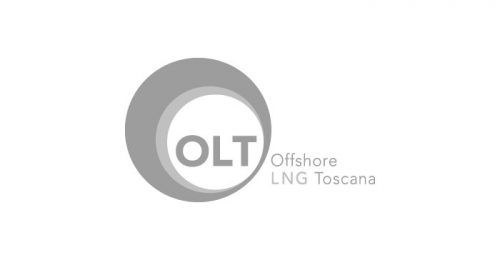LNG
LNG – Liquefied Natural Gas is a mixture of hydrocarbons (consisting mainly of methane and in smaller percentages of ethane, propane and heavier hydrocarbons) that is a liquid at a temperature of about -160°C, with a specific volume reduction of about 600 times compared to natural gas in the gaseous state under standard conditions, transportable by LNG carriers equipped with cryogenic tanks.
On the FSRU Toscana the regasification process takes place by heat exchange with seawater, using propane as a closed-circuit intermediate fluid.
THE CHARACTERISTICS OF GNL:

- It is a colorless and odorless fluid
- It is highly volatile and tends to disperse rapidly in the atmosphere
- Boiling point of about-160 °C (depending on composition)
- Density between 430 and 520 kg/m³ (depending on composition)
- It is classified as a highly flammable substance
- It is stable in relation to its chemical and physical properties
THE ADVANTAGES OF LNG:

- It is neither toxic nor corrosive
- It is not classified as dangerous to health
- It is not classified as dangerous to the environment
- It is easily transportable
- It can be used in civil and industrial sectors, in the transportation sector (maritime and road) and for supplying isolated networks
- It allows the reduction of carbon dioxide, sulfur oxides, nitrogen oxides and particulate matter emissions compared to other fossil fuels
- It contributes to the diversification of supply sources so as to ensure the security of the national Gas system
- The calorific value of LNG, that is the amount of energy developed from the complete combustion of a fuel, is higher than that of other traditional fuels (LPG, diesel, gasoline)


